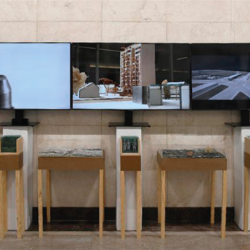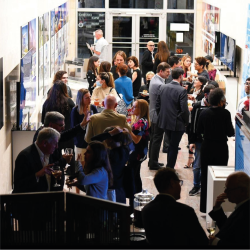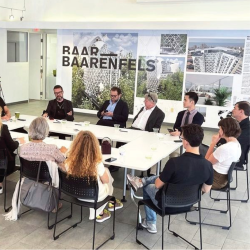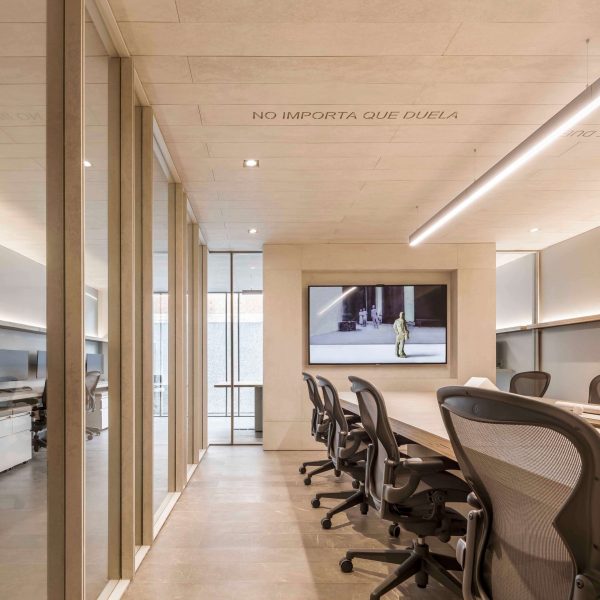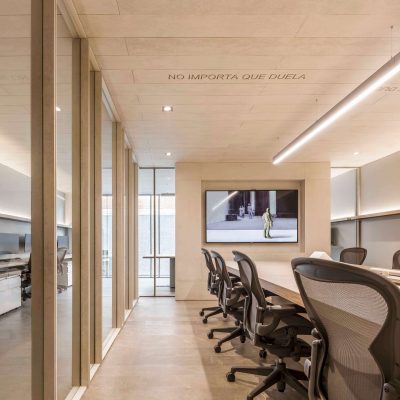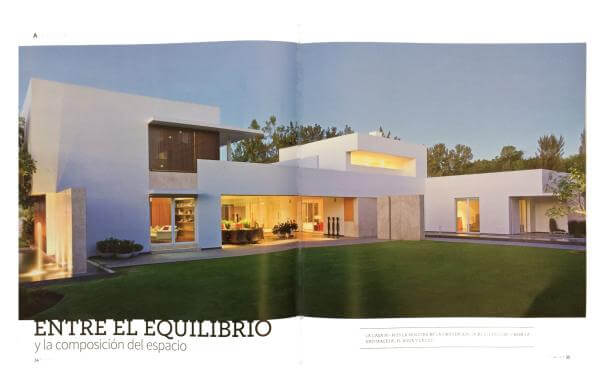“Time Space Existence” – FIU Miami 2021

The European Cultural Centre-USA is a Non-Profit organization that aims to heighten the awareness of philosophical themes in contemporary art, architecture, and design and introduces the concept of TIME SPACE EXISTENCE to a broader international audience.
Bordering Echoes,
In search of Resonance
In this technological era, where technique and technology are the insepararable fields of research for environmental sustainability, we need to develop, as a parallel field of knowledge, a more sensible relationship with the components of space.
We perceive space as an area of infinite proportions where forms or fragments are contained within others spaces, each time of a greater scale. Region, city and community are bound to architecture in a form that each can resonate in search of balance with each other in order to achieve sustainability at different levels of existence.
We have to go back to the fundamentals of composition where the perfect balance between mass and void, between light and shadow, between texture and color, between the man made and nature, can all resonate in synchronicity with mind and body; this resonance between spatial components congregates meaning in search of atmospheres that promote the creative serenity needed for a better quality of life.
Furthermore, these would be the atmospheres that allow for a better understanding of the emotional components of space, at the scale that resonates with body and mind in search of a sequence of spaces that would promote the social integration among its users and most of all, that will promote the reuse and the resignification of cities at their weakest points.
It is when building is rooted within its context and culture, when connected to urban fabric and social dynamics, when derived from tradition and typology and when composed as a sequence of balanced contrasts, that we could find, in the built environment, the essential factors for resonance in Architecture.
Emotional Resonance,
Back to the origin
The concept of emotional resonance relates to the scale of the body. The place where we touch, smell and hear at an intimate scale, the relationship between space with mind and body is the one that evokes emotion and meaning.The place that gives the user a sense of connection to a certain place and time, to a reality that frames the past and the future in a continuos present.
The harmonic relation between mass and void, the balance between light and shadow, the sinchronicity between color and texture, and the resonance of the proportions achieved between the man made and nature, give us the opportunity to achieve a condition that connects our minds and bodies to space in a way that creates atmospheres for creative serenity.
Social Resonance,
Redensification of the interstitial city
The Buildings we design today not only have to be environmentally sustainable, comfortable and beautiful, but they must be the catalytic element that substantiates the urban fabric in the search for social integration.
Our cities can not keep growing as gated communities where the zoning strategies preserve the privacy of its users based on the use of the automobile as the main source for segregation and pollution. As an alternative to endless city growth we have to redensify the interstitial neighborhoods that bridge in between the historic districts and the endless peripheries. At these secondary rings of the city we can find the ingredients that could help us consolidate mixed use neighbourhoods with better public spaces and urban facilities, better transportation systems and most of all, recycled and reused spaces to build new mid rise housing that can nourish an adequate density and provide for the best suitable amenities for social interaction and personal growth.
Furthermore, these mid rise buildings should be designed with the idea of bringing people togather and should include facilities that could be planned for users that want to learn from each other.We need more meeting places where sharing experiences and activities can bring social interaction at different levels of interest. We have to create more spaces where different age groups can interact, learn, work and enjoy their leissure time in denser and more intellectually attractive communities.
This should be a time for thinking less about commuting and enjoying time for searching for life quality instead. Our well being is not measured by the confort offered by our car, or the size of our swimming pooll, but the quality of time we spend with others and ourselves instead, and most of all, a time to persue the personal options that could be more socially interactive and environmentally sustainable.
Suburban Resonance
Dissolution of borders
For the last 60 years the periphery of Guadalajara, México has been losing its agricultural land to the formation of gated communities that have not been able to form a coherent urban fabric, nor have they been able to provide the quality of urban life that planners and designers have been trying to idealize.
Thousands of families have arrived in the suburbs looking for cheaper housing, searching for a piece of green within their properties and aiming for a more serene place for their children to grow up.Instead, these hopeful families have found a more stressful life style since they have made themselves heavily dependent on the use of the automobile in search of connectivity with the metropoli.
As a consequence, the requiered vehicular infrastructure severely interrupts local connectivity between rural towns and agricultural parcels and also promotes segregation and social decay at neighboring towns and residential communities.
Furthermore, these new horizontal communities still depend on the metropolis as their main source of employment, services and amenities, ignoring completely the advantages of the potential that neighbouring colonial towns have to offer in terms of educational, cultural, comercial and recreational possibilities through the upgrading of their historical buildings and public spaces.
Not only do the gated communities need to be better connected to their colonial towns of reference, but they also need to dissolve their barriers at some strategic points in order to insert new programs and activities that would facilitate social integration. The calculated dilution of borders, specifically at public spaces and the insertion of cultural programs that can be shared among the potential users, could ease the social segregation atmosphere that prevails at the periphery.
